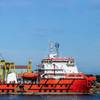Ichthys LNG Facility to Use Light Structures Monitoring Solution
Light Structures, a global technology company for fiber optic monitoring and analysis systems, has won the contract to provide the Load & Fatigue Monitoring Solution for the $2.7 billion Ichthys LNG Central Processing Facility (CPF), currently under construction by Samsung Heavy Industries.
Light Structures’ solution will help the Ichthys operating partners monitor and maintain the structural integrity of the enormous CPF, forming the cornerstone of key repair and maintenance tasks as it enters its 40-year operational lifecycle.
“This is a landmark business win for Light Structures,” said company Managing Director Inge C. Paulsen. “This Ichthys CPF is the biggest project of its kind anywhere in the world, so the fact that we are now a key supplier is a tangible endorsement of the quality, performance and reliability of our solution.”
Light Structures’ Load & Fatigue Monitoring system will utilize an array of sensors, connected by zero-power fiber optic cables, to continually harvest data relating to the loads working on the structure of the CPF – which, at 110m by 110m, is the largest semi-submersible platform ever built. Based on this data, analyses and calculations will be undertaken to monitor fatigue development across crucial structural areas.
“The importance of this project, which is set to produce an initial capacity of 8.4 million tons of LNG and 1.6million tons of LPG off the Australian coast per annum, has led to understandably stringent quality and safety requirements,” Paulsen commented. “Our system is one of less than a handful capable of meeting these requirements and, given our track record on LNG FPSOs – we have recently installed systems on ENI’s Goliat, Teekay’s Knarr and TOTAL’s Pazfloor unit – alongside our excellent relationships with many Korean yards, we emerged as the clear monitoring partner of choice.”
Light Structures’ system, which is an evolution of traditional hull stress monitoring technology, will monitor fatigue build-up to provide a valuable overview of structural integrity and allow the project’s operators – INPEX is a 66,07% partner, TOTAL 30% plus minority partners Oska Gas, Toho Gas, Tokyo Gas and Chubu Electric Power - to take decisive repair and maintenance action before cracks appear.
“There are real structural challenges for advanced, complex offshore structures operating in harsh natural environments, and a reliable structural monitoring system will enable better maintenance planning and safe operation.” explained Paulsen. “And without an effective monitoring system it is impossible to inspect for fatigue before cracking gets serious.”
He continued, “It is my belief that it won’t be long before effective solutions like ours become absolutely obligatory for semi-submersibles and other units in the oil and gas industry. Speaking to naval architects in charge of these projects, they agree. So, with the ease of retrofitting a fiber optic system and obvious safety benefits inherent in protecting these assets, I think this sector will be a key growth area for our business going forwards.”
The CPF, which is scheduled to enter operation in 2016, will work alongside a FPSO at the Browse Basin Field, 440km north of Broome, Western Australia. It will undertake initial processing of the gas (the largest hydrocarbon find in Australia for the last 40 years) to extract condensate and water, before its transfer through a pipeline for further processing.
Light Structures fiber optic solution is especially suited to the LNG sector, as it can be configured without electrical components in hazardous areas, a key safety feature, and has the ability to operate at low temperatures with complete reliability. Adding that the fiber optic sensors do not require periodical calibrations makes it a clear winner also when it comes to maintenance and lifecycle cost.
Light Structures said it is also experiencing increased interest from the shipping sector where the dramatic accident on the MOL Comfort this June has triggered an enormous demand for similar systems for the large container vessels. Owners of cape size bulkers are now following the same track as they seem to face similar structural challenges on these types of vessels.
lightstructures.no














